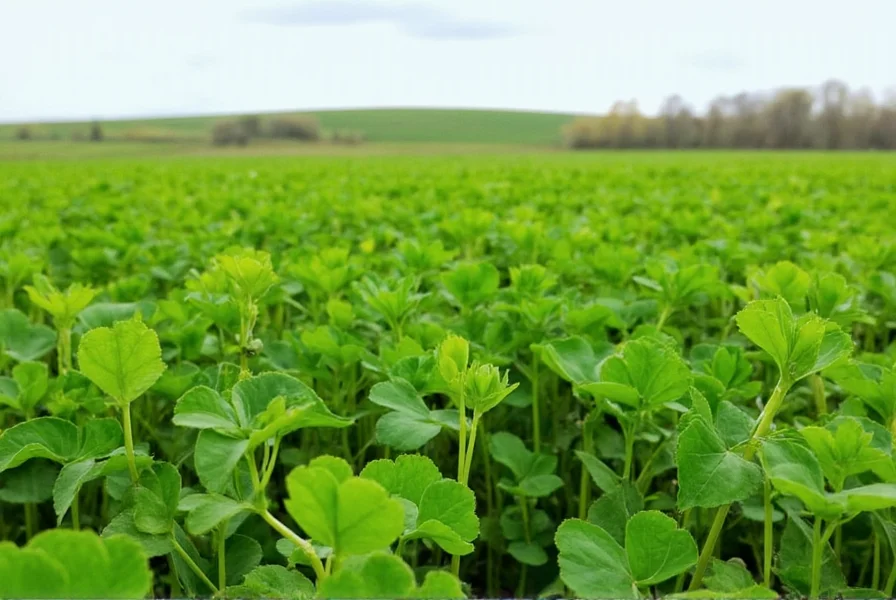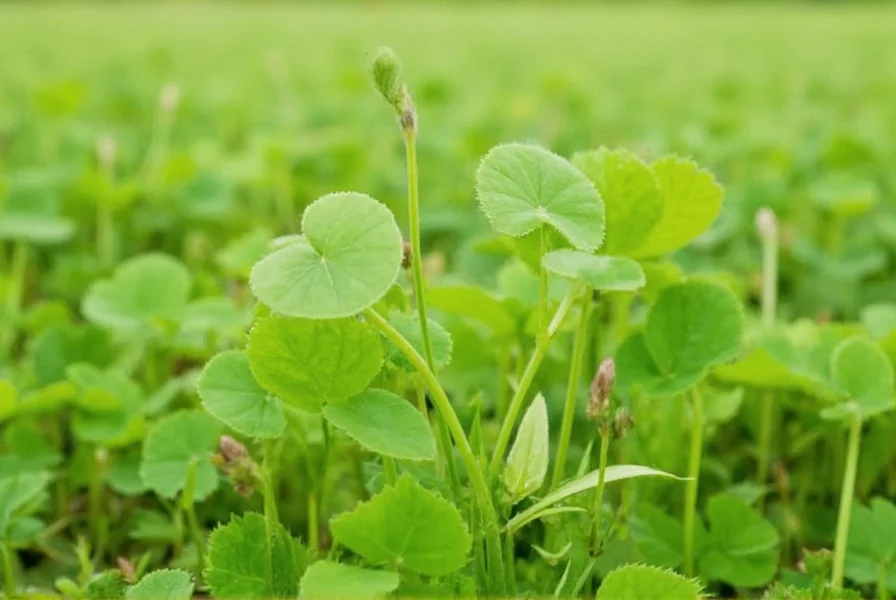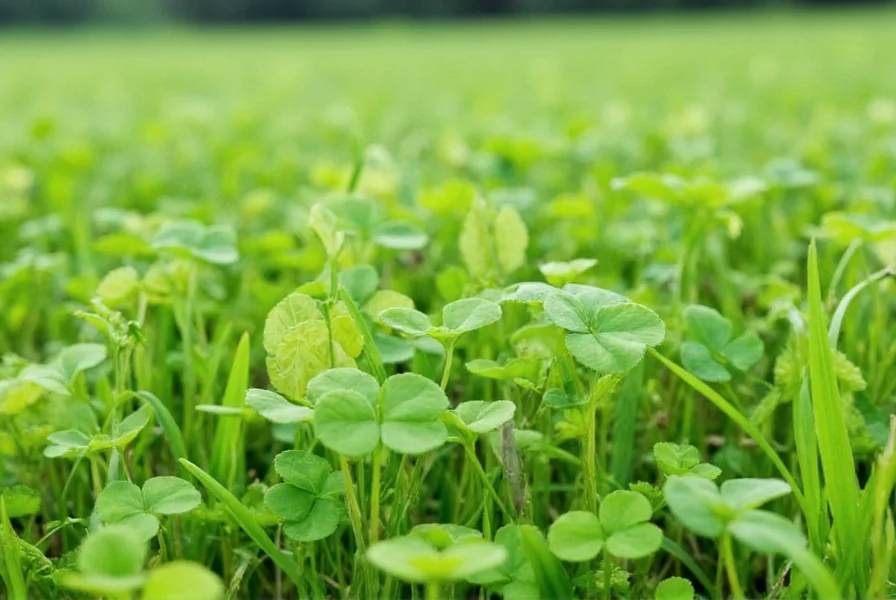Clover fields represent one of nature's most efficient agricultural systems, combining ecological benefits with practical farming applications. These distinctive landscapes feature dense growth of clover species that transform ordinary fields into vibrant ecosystems supporting biodiversity and soil regeneration. Understanding the science behind these fields reveals why they've been valued by farmers and ecologists for centuries.
Types of Clover Found in Agricultural Fields
While numerous clover species exist globally, two varieties dominate cultivated fields. White clover (Trifolium repens) forms low-growing, creeping mats with white or pinkish flower heads, thriving in moderate climates and tolerating regular grazing. Its stolons (above-ground stems) enable rapid spread across fields. Red clover (Trifolium pratense), with its upright growth habit and distinctive purple-red flowers, grows taller and serves as excellent hay crop. Less common but increasingly popular is crimson clover (Trifolium incarnatum), valued as a winter annual cover crop that blooms early in spring with striking red flowers.
Ecological Advantages of Clover-Dominated Landscapes
Clover fields create miniature ecosystems that support remarkable biodiversity. The nectar-rich flowers attract honeybees, bumblebees, and solitary bee species essential for pollination services. Research shows clover fields can host up to 30% more pollinator species than conventional grass pastures. Beyond insects, these fields provide food sources for birds like quail and pheasants while supporting beneficial insects that control agricultural pests. The deep root systems create channels in soil that improve water infiltration by up to 40% compared to compacted grass fields, reducing runoff and erosion.
| Characteristic | Clover Field | Traditional Grass Field |
|---|---|---|
| Nitrogen Contribution | 80-200 lbs/acre annually | Requires synthetic fertilizer |
| Drought Resistance | High (deep taproots) | Moderate to low |
| Pollinator Support | Excellent (continuous bloom) | Limited (seasonal bloom) |
| Soil Organic Matter | Increases by 0.5-1% yearly | Stable or declining |
| Maintenance Requirements | Low (once established) | Moderate to high |
Nitrogen Fixation: Nature's Fertilizer System
The remarkable ability of clover fields to improve soil fertility stems from their symbiotic relationship with Rhizobium bacteria. These microorganisms colonize clover roots, forming nodules where they convert atmospheric nitrogen into ammonia that plants can use. This natural process eliminates the need for synthetic nitrogen fertilizers, saving farmers approximately $80-120 per acre annually while preventing nitrogen runoff that contaminates waterways. A mature clover field can fix between 80-200 pounds of nitrogen per acre each growing season, with red clover generally fixing more than white clover due to its deeper root system.

Establishing and Maintaining Productive Clover Fields
Creating a successful clover field requires careful planning and execution. The optimal planting window varies by climate zone but generally occurs in early spring or late summer when soil temperatures reach 45-50°F. Proper soil preparation involves testing pH (ideal range 6.0-7.0) and addressing deficiencies before seeding. Broadcast seeding at 2-5 pounds per acre works well when followed by light harrowing to ensure seed-to-soil contact. For existing pastures, frost seeding during late winter allows clover seeds to work into soil as it freezes and thaws. During establishment, monitor for weed competition and avoid heavy grazing until plants have developed strong root systems. Established fields benefit from rotational grazing patterns that allow plants to recover between grazing periods.
Addressing Common Clover Field Challenges
While generally low-maintenance, clover fields occasionally face challenges that require intervention. Clover weevils and aphids may appear during dry periods but rarely cause significant damage when beneficial insect populations are healthy. More problematic is the potential for clover root borer infestations, which can be managed through crop rotation. In wet conditions, fungal diseases like powdery mildew may develop, though proper air circulation from rotational grazing usually prevents serious outbreaks. Some farmers report challenges with clover dominance decreasing after 3-4 years, which can be addressed by overseeding or implementing a strategic rotation plan with other cover crops.
Modern Applications in Sustainable Agriculture
Today's agricultural innovators are rediscovering the value of clover fields within regenerative farming systems. Progressive farmers integrate clover fields into multi-species cover crop blends that include grasses and brassicas, creating complex root structures that enhance soil biology. In vineyards and orchards, clover serves as living mulch between tree rows, suppressing weeds while attracting beneficial insects that control pests. Urban agriculture projects increasingly incorporate clover into community garden spaces for its low maintenance requirements and pollinator benefits. Research from agricultural universities continues to demonstrate how strategic clover field implementation can reduce input costs while improving long-term land productivity.

Practical Considerations for Different Climates
Clover field success varies significantly by climate zone. In northern regions, white clover performs better as a perennial, surviving winter freezes with proper snow cover. Southern farmers often use crimson clover as a winter annual, planting in fall for spring bloom before summer heat arrives. Arid regions benefit from deep-rooted alsike clover (Trifolium hybridum), which tolerates drier conditions better than other varieties. Coastal areas with saline soils might incorporate subterranean clover (Trifolium subterraneum), which shows moderate salt tolerance. Understanding your specific microclimate and soil conditions before selecting clover varieties dramatically increases establishment success and long-term field productivity.
Conclusion
Clover fields represent a powerful intersection of agricultural productivity and ecological stewardship. Their ability to fix atmospheric nitrogen, support biodiversity, and improve soil health makes them valuable components of sustainable land management systems. Whether implemented as dedicated fields, cover crops, or integrated pasture components, clover offers practical benefits that extend beyond immediate agricultural applications to broader environmental health. As research continues to reveal new benefits of these versatile plants, their role in regenerative agriculture systems will likely expand, offering farmers increasingly sophisticated ways to harness nature's own processes for productive, resilient landscapes.











 浙公网安备
33010002000092号
浙公网安备
33010002000092号 浙B2-20120091-4
浙B2-20120091-4